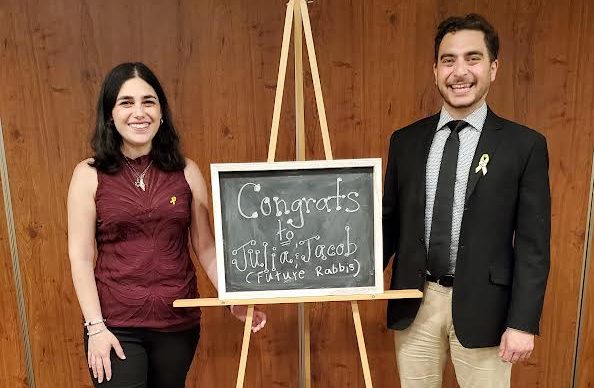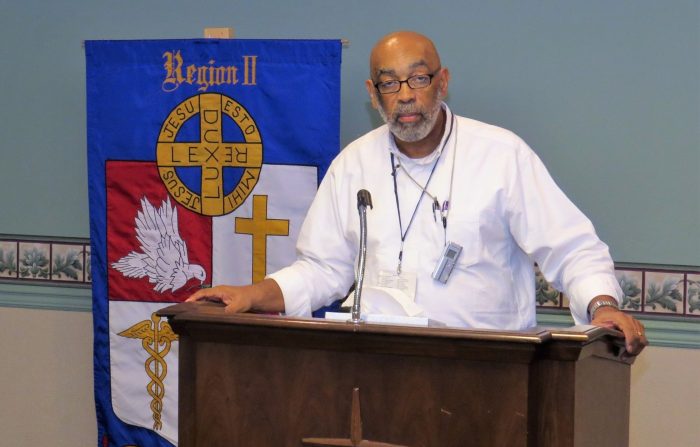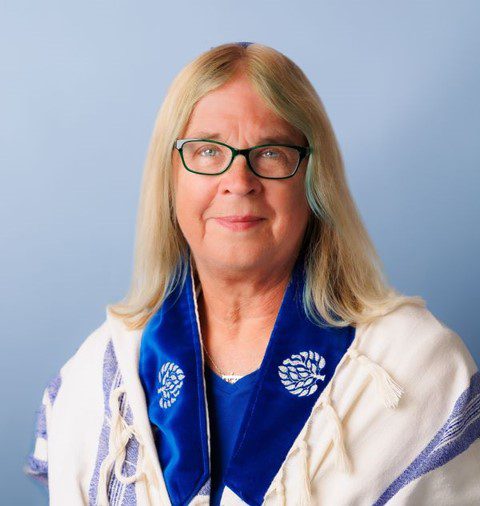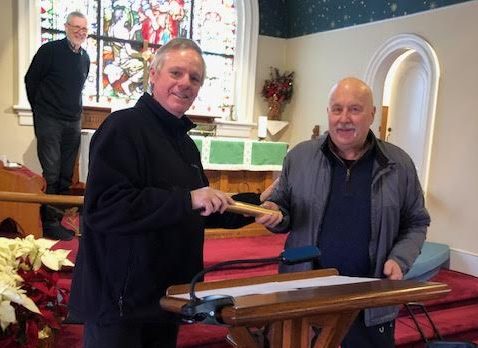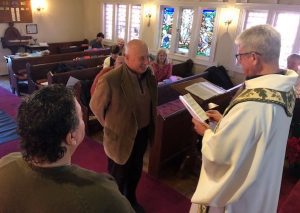By Katherine Kelton
The Conscience Bay Quaker Meeting House in St. James has been convening since 1961. This meeting house in St. James has started its own Earth Care Committee and its first goal is incredibly close to home for the Quakers.
On the meeting house’s grounds, two former horse paddocks were mowed and maintained as a lawn. The Earth Care Committee plans to convert the lawn into a meadow through a process of rewilding. An expert at Cornell Cooperative Extension informed the committee of a problematic barrier of invasive species around the paddocks, further complicating their goal of having a self-propagating native meadow.
Barbara Ransome, the clerk of grounds at the meeting house, works with the Earth Care Committee for which Amy G. is the clerk. They spoke with TBR about the process.
“In this first phase of removing these invasive plants, we needed contractors and equipment. Which was funded by our own meeting house. For the planting materials we got a small grant from the New York Yearly Meeting,” Ransome said.
The Yearly Meeting is a gathering of state Quaker congregations. The Conscience Bay Quakers applied for an Earth-care grant from the Yearly Meeting with an “inclusive application,” as Ransome described it. The group received $500, the largest grant allowed to be given as a result of their application.
The grant money covered some of the cost of the native species, although Amy G. admitted that securing enough plants to cover such a large area is “quite expensive.” Consequently, the newly-cleared area will be replanted in stages with the work ongoing as funds, plants and volunteers are sourced.
The pair enlisted the help of local native plant grower, Mindy Block, who owns Quality Parks in Port Jefferson. Block works to provide native plants to locals and is working to cultivate more species. She provided the group with milkweed and native grasses, along with a variety of other plants that it hopes will begin to self-propagate and spread to create a native habitat.
Amy G. explained that one of the beliefs of Quakerism is respecting the Earth’s ecological integrity and being “good stewards of the environment.” She shared that an attendee of the society inspired these efforts when he mentioned how burning fossil fuels to mow the horse paddocks was not aligned with the values of the Quakers.
Ransome said, “In unity, the Quaker meeting house decided to go forward with an Earth Care Committee not to mow the paddocks.” From there the committee decided to take on a plan for rewilding the grounds, which refers to allowing native plants to take over the area and self-propagate. However, the process has not been an easy transition.
The committee wanted to ensure the meadow could thrive independently as part of its plan to take a combination active-passive approach. In the beginning stages, the committee will take an active approach to planting native species and clearing the border of invasive plants around the paddocks.
The end goal would be to allow habitat to develop where creatures can live and be undisturbed by machines and people. Ransome provided an example of a tree falling, where she believed it is beneficial to allow it to stay because it can become a home to small animals.
“Our first step in outreach was the Girl Scout troop, who we invited to help plant the native grasses and plants,” Amy G. said. The committee hopes to invite them back each year to continue to learn about plants and invest in a long-term community project. The committee also hopes to involve other groups and anyone who wants to get involved.
The St. James attendees and members meet weekly in person or via Zoom for worship. Quakerism is also known as the Religious Society of Friends. Ransome wants people to know that “there is a concern for climate change — this is one way the Quakers are dedicated to being good stewards of the Earth.”
Those interested in joining the Earth Care Committee do not have to be practicing Quakers, nor do they have to fill out any formal application. Ransome urges those interested to contact her via email at: [email protected].







